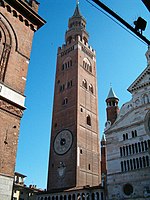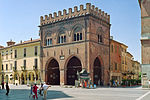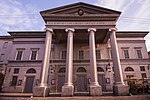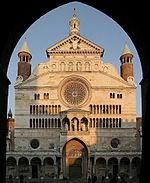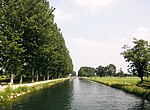Cremona Cathedral
12th-century Roman Catholic church buildings in ItalyCathedrals in LombardyChurches completed in 1170Roman Catholic cathedrals in ItalyRoman Catholic churches in Cremona ... and 1 more
Romanesque architecture in Lombardy

Cremona Cathedral (Italian: Duomo di Cremona, Cattedrale di Santa Maria Assunta), dedicated to the Assumption of the Blessed Virgin Mary, is a Catholic cathedral in Cremona, Lombardy, northern Italy. It is the seat of the Bishop of Cremona. Its bell tower is the famous Torrazzo, symbol of the city and tallest pre-modern tower in Italy. Also adjoining is the baptistery, another important medieval monument.
Excerpt from the Wikipedia article Cremona Cathedral (License: CC BY-SA 3.0, Authors, Images).Cremona Cathedral
Whitehall, Londres Covent Garden
Geographical coordinates (GPS) Address Website Nearby Places Show on map
Geographical coordinates (GPS)
| Latitude | Longitude |
|---|---|
| N 45.1335 ° | E 10.0255 ° |
Address
Trafalgar Theatre
Whitehall 14
SW1A 2DY Londres, Covent Garden
Inglaterra, Reino Unido
Open on Google Maps
